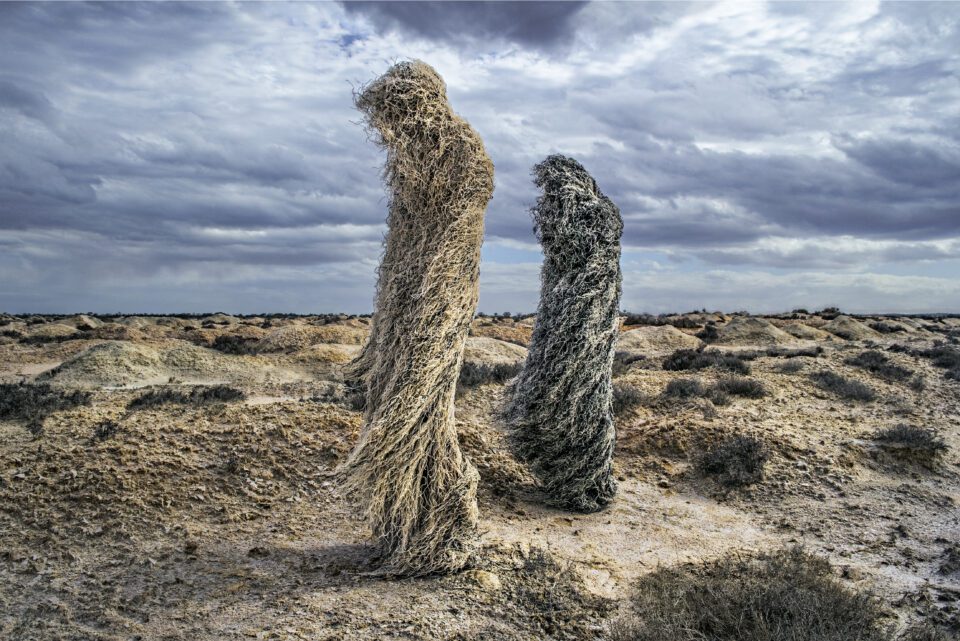Monash Gallery of Art’s (MGA) latest exhibition Australian exotica showcases the works of some of Australia’s most celebrated artists. Sourced directly from the gallery’s collection, the photographs relate to the theme of exotic antipodes. This year MGA decided to select pieces that highlight a particular relationship with Australia and Australian identity.
The exhibition features the works of 27 photographers and while there are apparent differences between each, certain connections bind them to the overall vision of the show. The works from the collection were narrowed down and links were drawn between the broad range of subject areas, styles and approaches. MGA’s Assistant Curator Stella Loftus-Hill says: “The exhibition includes everything from the purely documentary to the purely constructed. Some artists document the strangeness of the Australian landscape with a certain naïve wonder; others stage tongue-in-cheek portraits of exotic natives.” She explains that the show asks people to reflect on the often contradictory ways that the concept of ‘the exotic’ circulates through Australian history. A challenge was to propose this as an engaging question rather than: “offering an opinion on a thorny issue.”
Subthemes include Indigenous identity and representation; Australian history; Australian identity and representation; and current environmental concerns. Loftus-Hill says that for many of the artists the European vision of Australia as an exotic place is something that needs to be subverted and critiqued: “For others, the idea of living in an eccentric environment, with surreal undertows, continues to inform a distinctively Australian sense of place.”
The changing nature of the Australian landscape, its inhabitants and varying environments are researched and evaluated by the artists. Polixeni Papapetrou’s work, Study for Hattah man and Hattah woman (2013) are from the the series The Ghillies. Photographed in desert, rural and coastal landscapes around south-eastern Australia, two figures are seen standing together on a barren land. Sharing similar characteristics to their surrounding, they appear to be an extension of their environment. Their humanly outline obscures and pierces the sky making their purpose unclear. The work provides an example of the many vast landscapes that cover the continent.
To some, the Australian scenery observed in the exhibition will seem familiar or will perhaps come as a surprise. Peter Dombrovskis presents photographs of the remote areas of Tasmania. In Morning Mist, Rock Island Bend, Franklin River (1979) the hazy mist at the mountain tops drift downwards towards the smooth swirling currents of the river. Produced without the use of digital manipulation, Dombrovskis’ photographs bring forward a powerful intention; to inspire the protection of Tasmania’s wilderness by exposing its beauty. Morning Mist, Rock Island Bend, Franklin River was used in a campaign against the proposed damming of the Franklin River. The image is credited in playing a part in the prevented construction of the river.
After seeing Australian exotica, viewers will perhaps experience a wider appreciation for Australia’s unique natural attractions. Loftus-Hill says: “We hope that people will leave this exhibition with a new perspective on what it means to be Australian; they will be filled with a sense of wonder for what it means to live in the ‘antipodes’”.
Sara Sweet
Australian Exotica, until 29 May, 860 Ferntree Gully Rd, Wheelers Hill, VIC 3150.
For more, visit www.mga.org.au/exhibition/view/exhibition/195
Credits:
1. Polixeni Papapetrou, Study for Hattah man and Hattah woman, 2013 from the series The Ghillies, pigment ink-jet print, 69.9 x 105.0cm
Monash Gallery of Art, City of Monash Collection acquired with the funds raised by Friends of MGA Inc 2013; MGA 2013.027 Courtesy of the artist, Stills Gallery (Sydney) and Jenkins Johnson Gallery (New York).





